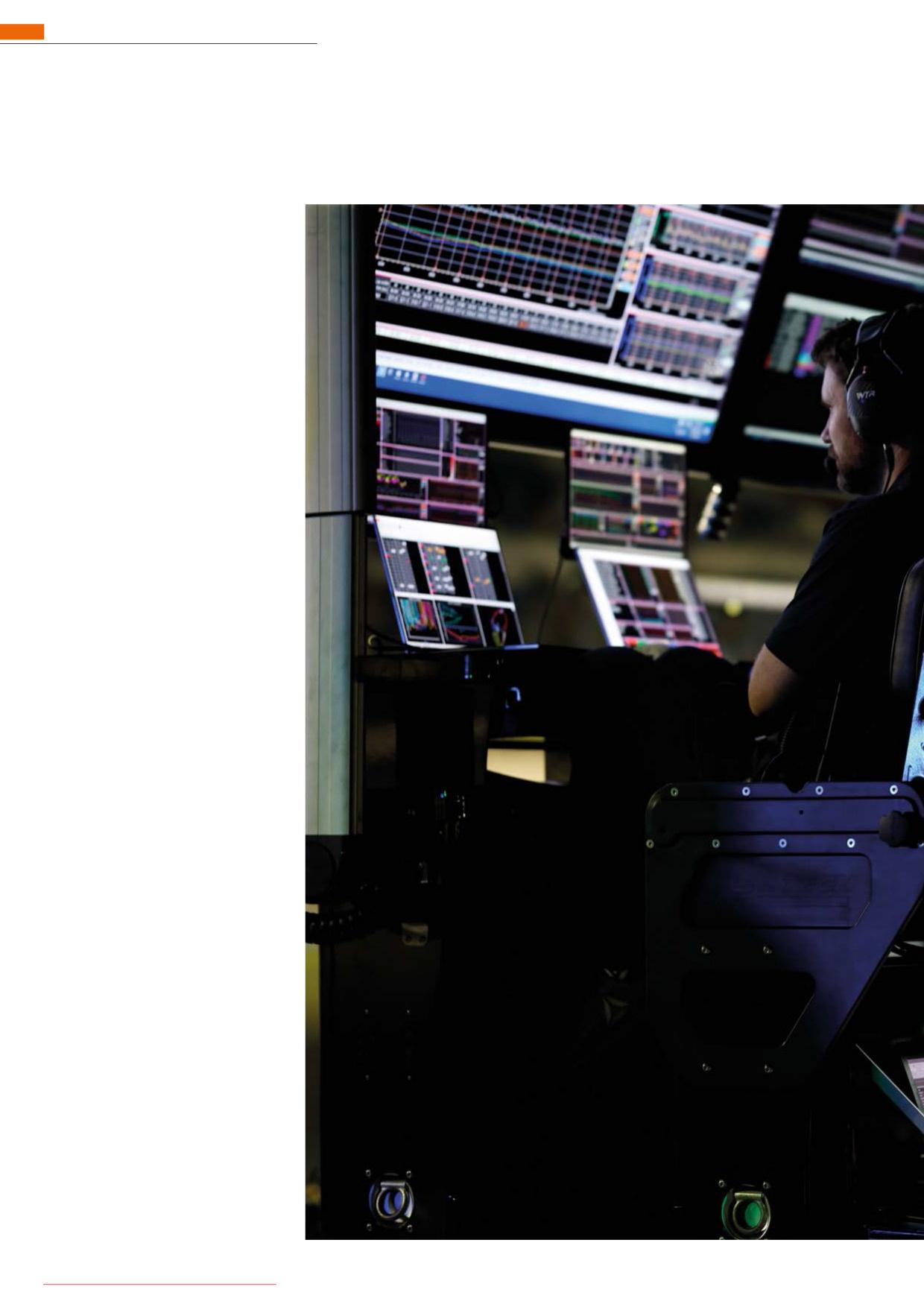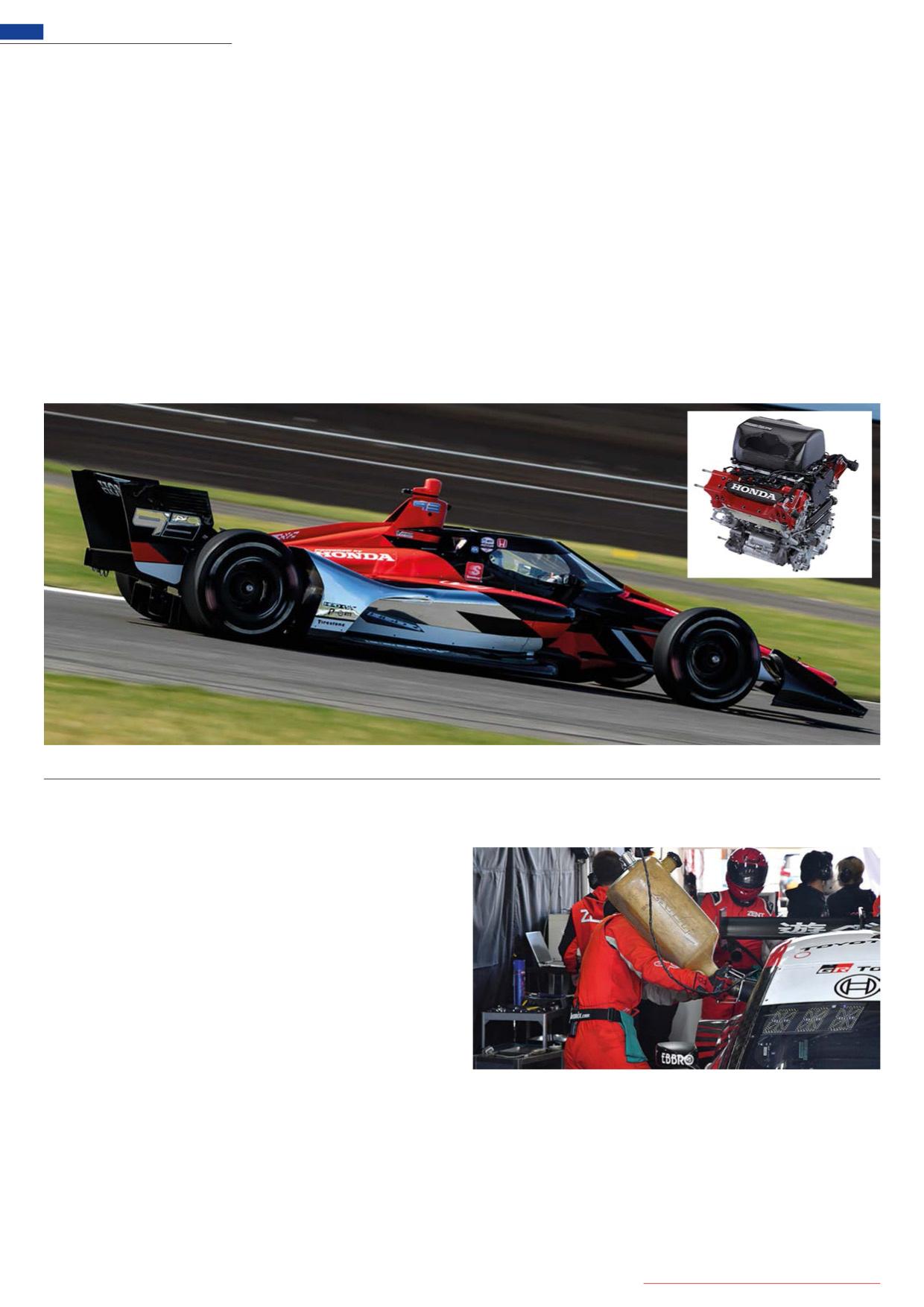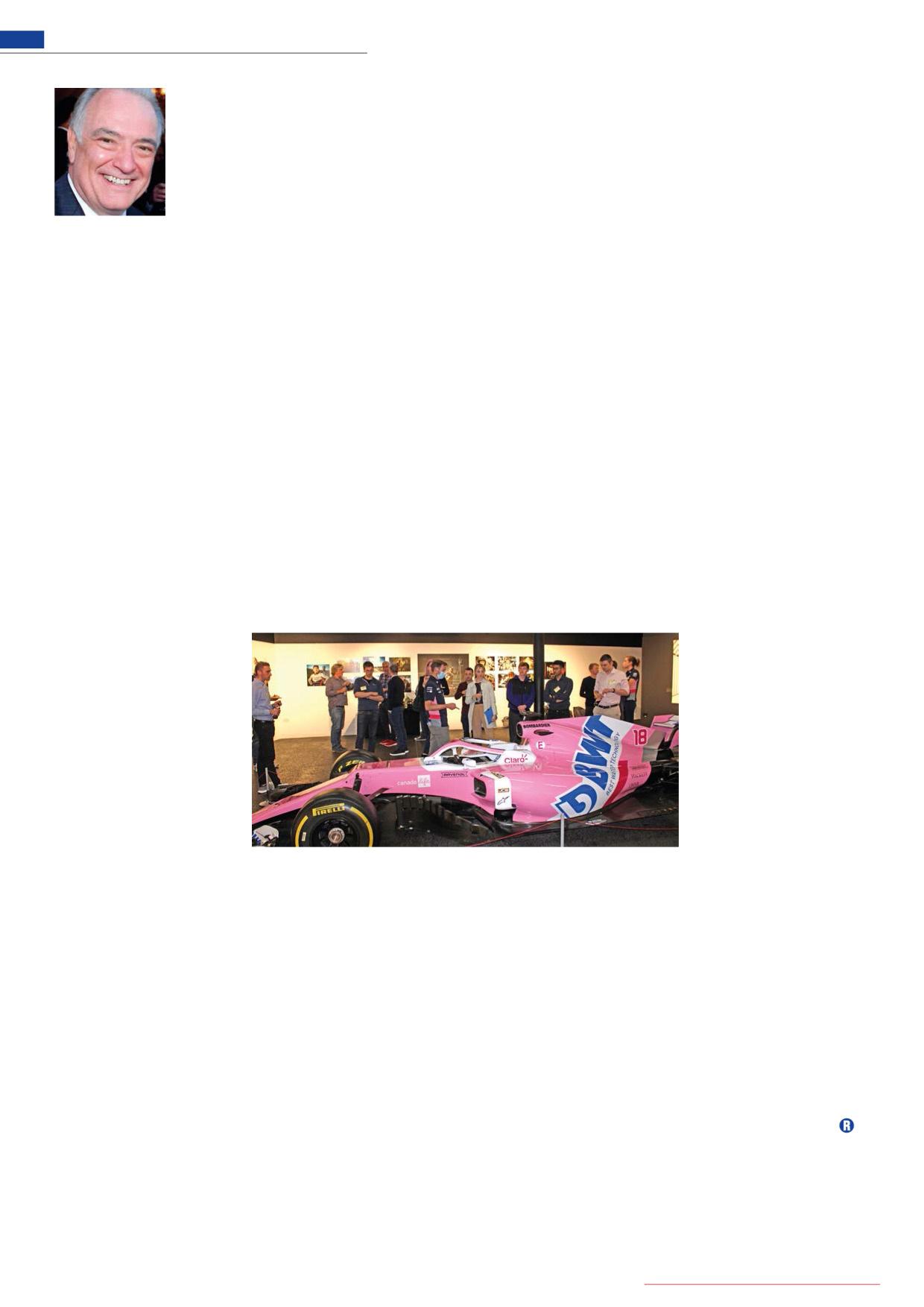
5 minute read
Alastair Macqueen
A noble deed
Or how I let Mercedes win Le Mans in 1989
Advertisement
Mercedes is currently a continuing and dominant force in Formula 1, but its record at Le Mans is rather more sketchy.
The horrific accident in 1955 saw the Silver Arrows stay away from motorsport for decades. Then, in 1985, a Sauber Mercedes driven by John Nielsen performed a back flip over the Mulsanne hump (a feat emulated by flight officer Mark Webber and others again in 1999).
In 1988, the team was providing stiff competition to the Jaguars in Group C races but, again at Le Mans, its aero calcs were not so clever. The maximum speed on most circuits was around 200mph, but on the Mulsanne 250mph was possible. That’s a 25 per cent increase in speed, but almost a 65 per cent increase in downforce. The cars were obviously not trimmed out enough for the constant high speed and the tyres promptly exploded, causing the cars to be withdrawn from the race.
Towards the end of 1985, I took up a new post as chief engineer at TWR Jaguar on the Group C team. It was not an easy gig as one of Jaguar’s stipulations was that we use the road car V12 engine. The motor weighed over 250kg, with a high c of g and was almost as long as a Cadillac!
Promising start
Fighting chance
But Tom’s team boasted some well chosen and very talented people. Tony Southgate’s elegant and superbly aerodynamic design added to the cutting-edge engine development by Kiwi, Alan Scott, gave us a fighting chance.
By the end of 1986, we had a quick and reliable car and, come the end of 1988, the TWR Jaguar Team had delivered two world championships and wins at both the Daytona and Le Mans 24 hours.
However, after three seasons with the big V12, Tom persuaded Jaguar that a new engine was required if we were to continue winning in Group C and IMSA. A smaller, lighter, 3.5-litre, twin-turbo engine was therefore developed in house from the engine that had powered the Metro 6R4 Rally Car for the 1989 season.
The initial shakedown at Donington in February showed great promise, the turbo car instantly a second a lap quicker than the XJR9 V12 car. But two weeks, five engines and only 30 laps of the Jerez circuit later, it was clear we had a great deal to learn about turbo engines.
So the V12 cars were pressed back into service for the start of the ’89 season, and the plan had always been to run these cars at Le Mans. Over the course of the 24-hour race, the cars do a similar mileage as a whole season of F1, at a higher average speed, and (hopefully) without service.
New, smaller diameter primary pipes were dyno tested on the V12 engine and run successfully at the Daytona race early in ’89 on the 6.0-litre IMSA cars. The smooth, low-down torque was a hit with drivers and the stopwatch alike, but they would prove to be our undoing at Le Mans.
After Jan Lammers won the 1988 Le Mans race with only fourth gear, it was clear we would also be developing the gearbox prior to the 1989 race.
It consequently underwent a number of internal upgrades to reduce the operating temperature and (hopefully) prolong its life. Our partners at Castrol had their chemists working on a trick new oil that would replace the ‘go to’ American Neo gearbox oil used by most of motorsport in the ’80s. In testing, the new oil reduced the bulk temperature of the gearbox by up to 15degC, so we felt in reasonably good shape heading for Le Mans. I was pulling triple duty in the lead up to the race as development engineer for the new turbo car, chief engineer and race engineer for the Lammers, Tambay, Gilbert-Scott car. It was a busy time. We had expected the turbo cars to dominate practice, with the ability to turn up the wick to gain a grid slot, so we concentrated primarily on race preparation, and it all looked quite promising. The real race contenders were the multitude of droning Porsches, the pair of rumbling Mercedes and the howling Jaguars. After one hour of racing, we had a car in the lead, with the rest of the pack in close company. Two of the Jags had made first lap pit stops with high tyre temperatures, indicating perhaps a puncture, but they were soon back out with a higher warning threshold on the infrared ‘heatspy’ units. In the fourth hour, my car lost almost two laps when it came in with a broken exhaust, and one of the other cars was having gearbox issues – not unheard of at Le Mans. By midnight, though, my car was back in the lead and was a lap ahead by 6am. Then it all started to unravel. By 06.30, my car was having its gearbox changed in the pit road (no garages at LM until the following year) and lost over 40 minutes. Three of the four Jags suffered similar issues, and one a blown engine probably before the other problems arose. My car eventually did a Moses (it came fourth), while the Mercedes I’m major Tom’s left-hand man… and just about to have a bit rumbled its way to victory. of a disaster. This is where the term ‘the pits’ comes from The new exhausts that had been so successful at Daytona on the 6.0-litre engine did not like the sustained high-speed running Le Mans demands on the 7.0-litre version. The heat signature and vibration nodes were obviously different, and they all cracked like eggshells on the day. With the benefit of a long investigation and 20:20 hindsight, we discovered the new gearbox oil made a wonderful foaming agent after prolonged usage, and that after about six hours the whole gearbox casing was full of foam, leaving very little liquid oil to be collected by the scavenge pump in the gearbox sump. I’m sure you can guess what happens next. I had carefully considered the ‘upgrades’ made to the cars that year, but unintended consequences had come into play and confirmed my mantra for Le Mans of ‘if it’s new, it will give a problem.’ It was a hard lesson learnt that day in France, but one we all learned from, and hats off to Mercedes for being there to pick up the pieces.










